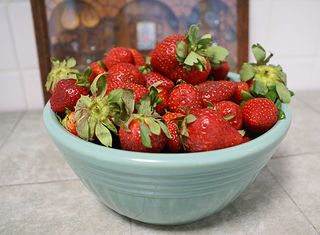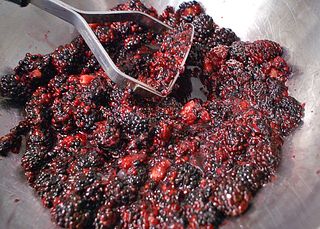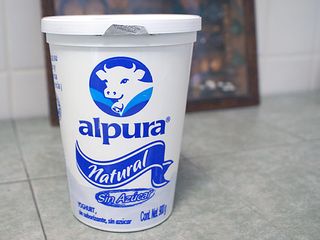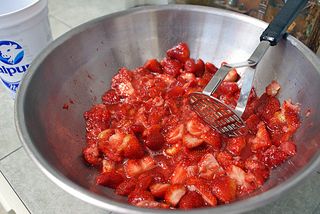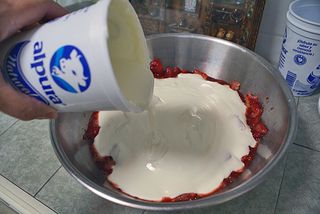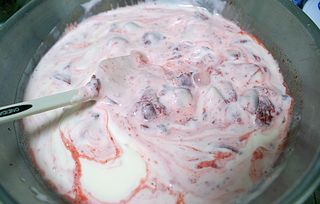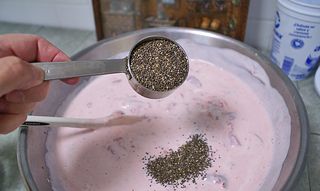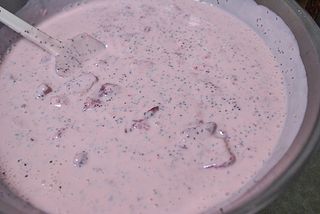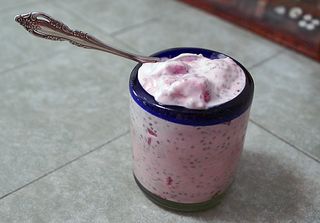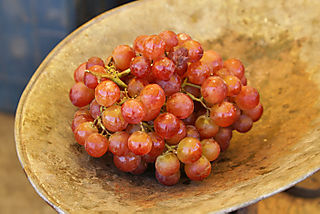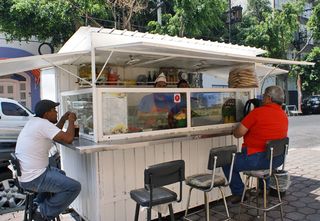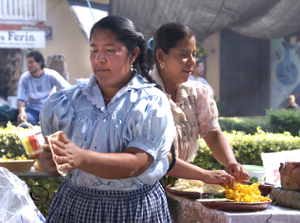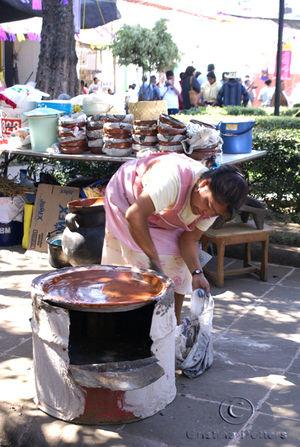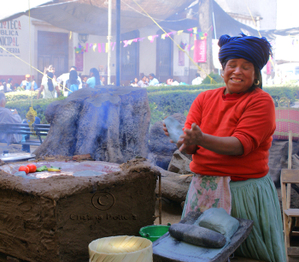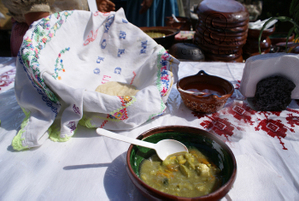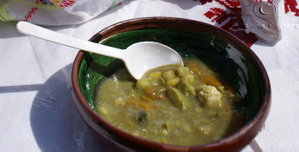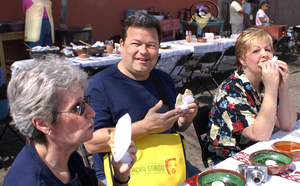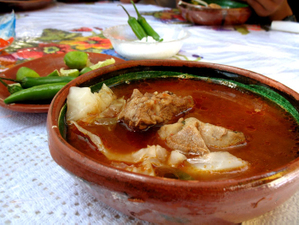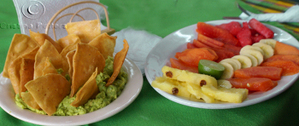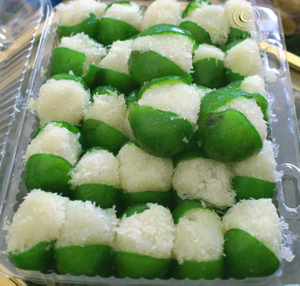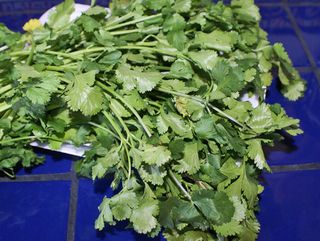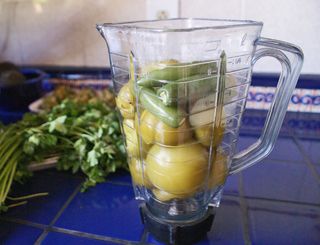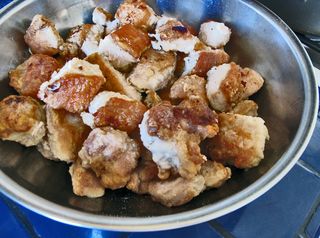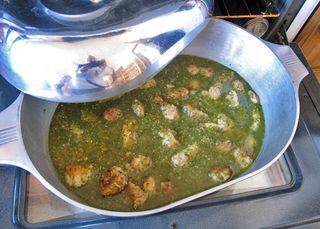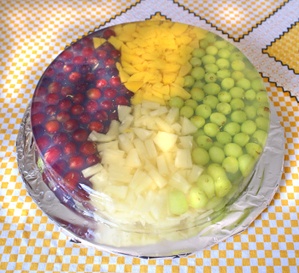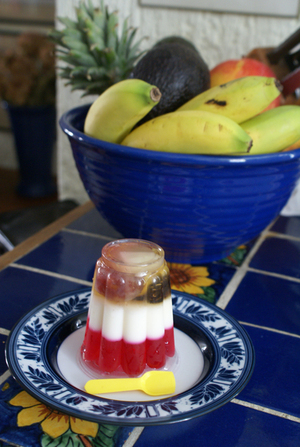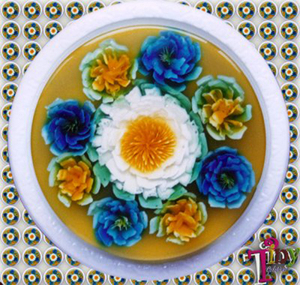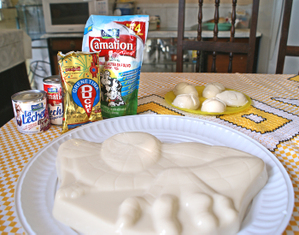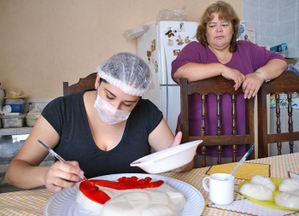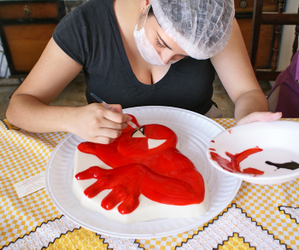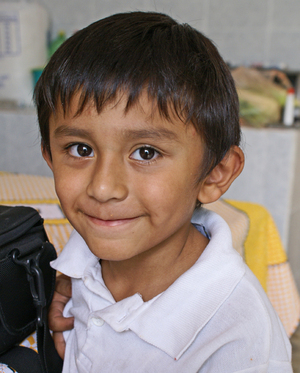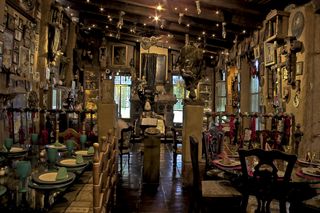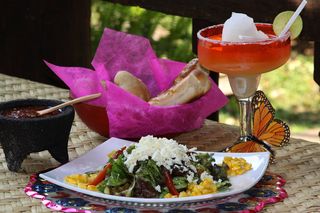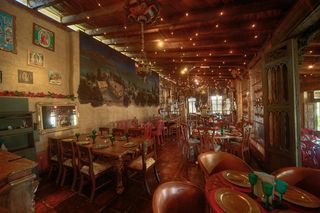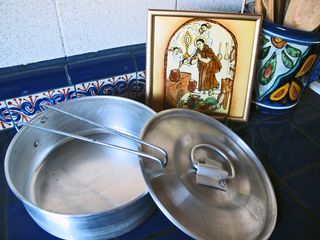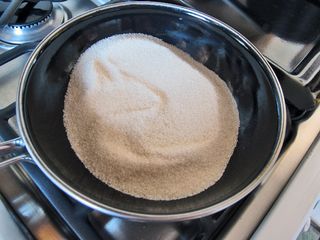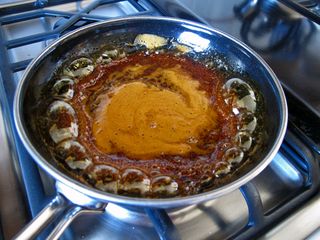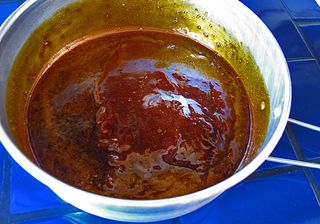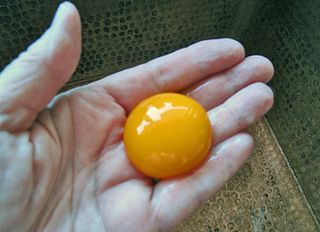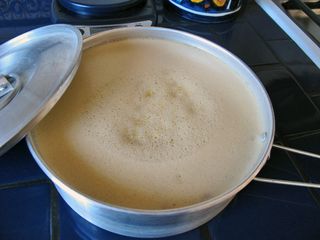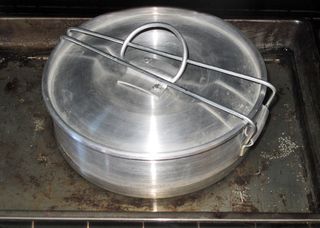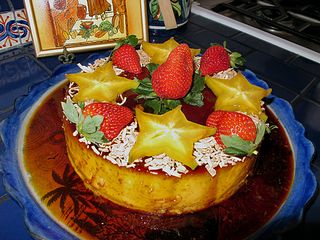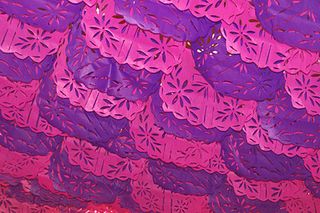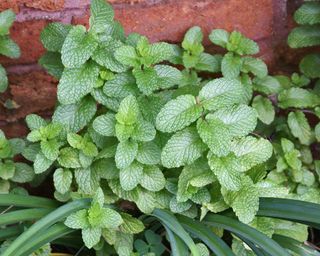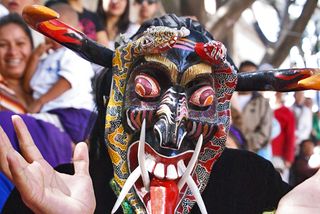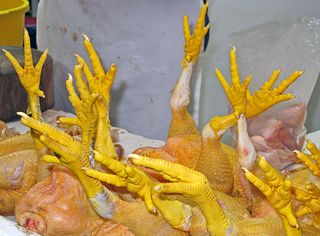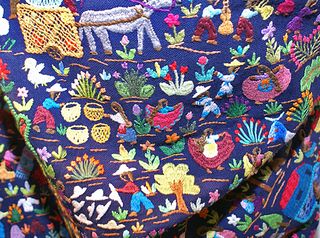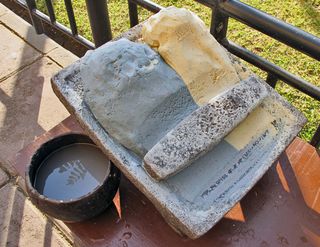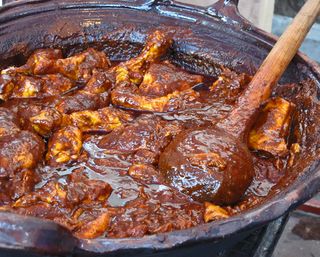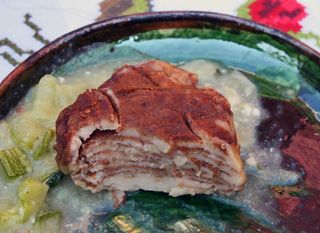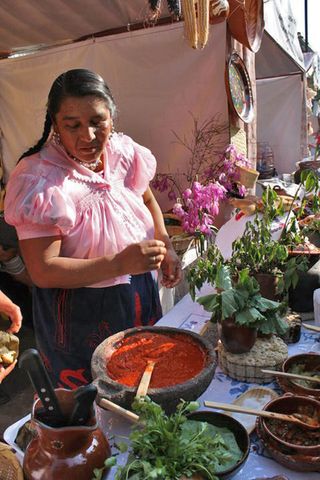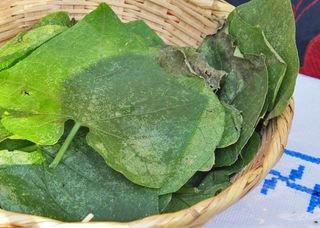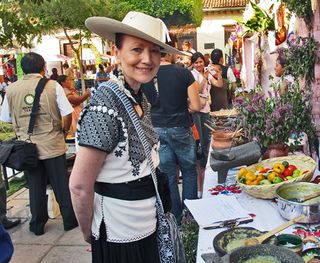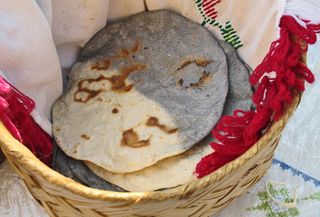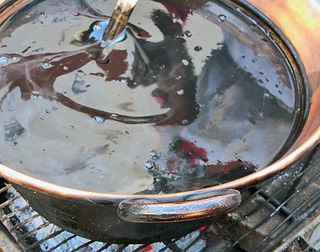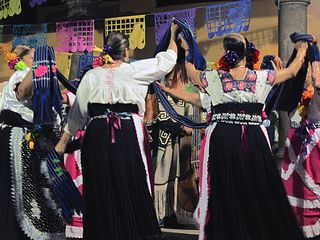
The latest restaurant news from Mexico City's leafy, gentrified Colonia La Condesa is Chef Ricardo Muñoz Zurita's Azul/Condesa at Nuevo León #68, almost at the corner of Calle Laredo–and walking distance from Mexico Cooks!' house. This eagerly awaited joint venture between Chef Muñoz and restauranteurs Gonzalo Serrano Orozco and Salomé Álvarez (formerly of Restaurante/Bar Ligaya) opened in late January 2011. Mexico Cooks! photo.
Just as Mexico Cooks! was in the process of renting an apartment in La Condesa, our good friend (that's the disclaimer, everyone) Chef Ricardo Muñoz Zurita announced that his newest baby, Restaurante Azul/Condesa, was about to open right here in the neighborhood. After having made–and several times–the lengthy but worthwhile trek to the far-southern Ciudad Universitaria (UNAM campus) site of Chef Muñoz's first restaurant, Azul y Oro, the news that his menus would be available within walking distance of us produced an ecstasy of anticipatory drool.
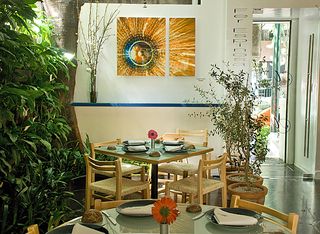
The ambience in all of Azul/Condesa's dining spaces–downstairs, upstairs, and in the garden–is conducive to enjoying a relaxing drink, a fine meal from the fixed or festival menus, and a changing gallery of art. Photo courtesy Azul/Condesa.
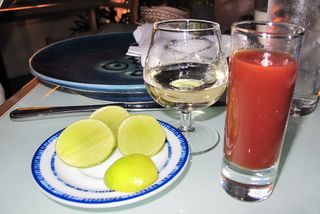
Start with a straight-up tequila, limones, and a chaser of terrific, flavorful, and picante house-made sangrita. Another option, served in typical jícaras (carved half-gourds), is a mezcal from Azul/Condesa's excellent tasting list. Mexico Cooks!' particular favorite is Oaxaca's mezcal Amores. Mexico Cooks! photo.
Something less than a year ago, Gonzalo Serrano and Salomé Álvarez approached Ricardo Muñoz with the idea of opening a new restaurant in the Ligaya building. After fourteen highly successful years at Ligaya, the Serrano/Álvarez partnership wanted to offer something new to its public. Gonzalo Serrano said, "We believe that it was time to offer a discerning clientele a taste of Mexico that goes beyond the Vitamina T choices that are most common in this neighborhood." (Vitamina T refers to a steady diet of tacos, tortas, tamales, and other standard fonda (small restaurant) or street food fare that starts with the letter 't'). The three restauranteurs hit it off immediately and Restaurante Azul/Condesa was in the works.
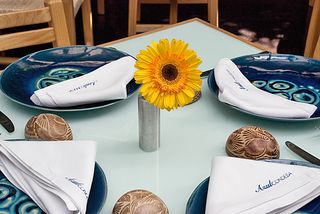
Before opening, the new partners collaborated in making changes to the interior spaces as well as the menu. The kitchen underwent a complete renovation, as did the restaurant furnishings. Tables, chairs, linen, and dishware were re-designed for the new venture. Upstairs, a new cantera (stone) floor was installed. Everything was planned for the comfort and enjoyment of the client, as well as for a different style but equally professional use of the kitchen. Photo courtesy Azul/Condesa.
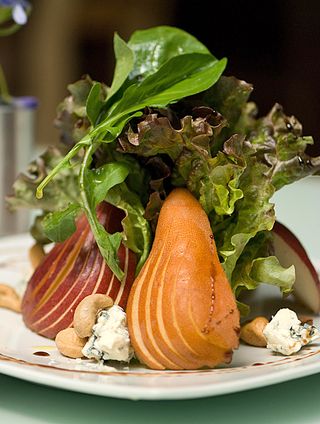
From Azul/Condesa's fixed menu, a salad of arrugula, pear, roquefort cheese, and cashew nut dressed with balsamic vinegar. Each dish on the menus is a work of art as well as an incredible explosion of flavor on your palate. Photo courtesy Azul/Condesa.
The Azul/Condesa menu concept divides between fixed and festival menus. Some menu offerings stay the same, ranging from salads to desserts. The festival menus change each month. The initial festival was Alma Jarocha (the soul of Veracruz), featuring dishes from that eastern coastal state. The main courses of the festival menu featured predominately seafood specialties such as Veracruz-style octopus, a fish in green pipián (in this case, a thick pumpkin-seed based sauce), and Boca del Río-style shrimp in a sauce of white wine and smoky chile chipotle en adobo. In addition, the Veracruz dessert menu showcased vanilla, mamey, guanábana, and other products from the state.

Buñuelos rellenos de pato rostizado (roast duck stuffed into wee packets and deep-fried, similar to fried wontons) are served with Oaxacan black mole, thin slices of steamed calabacita (zucchini), and fresh blackberries. This dish is on the menu as a main course for one person, but it also makes a marvelous appetizer for a table of three or four diners. Mexico Cooks! photo.
During the month of March, we were in love with the menu called Festival de Moles y Pipianes. The menu was set up in two parts: one side offered a selection of twelve moles and pipianes–just the sauces–and the other side offered a selection of eleven different meats, birds, and fish. The possibilities were endless: for example, almendrado huasteco, an almond mole from Veracruz, combined equally well with imported pheasant as with breast of turkey medallions or New Zealand lamb ribs. Chichilo negro, a Oaxacan black mole flavored with avocado leaves, made the kitchen's perfectly cooked medium-rare filete de res (filet of beef) a spectacular choice.
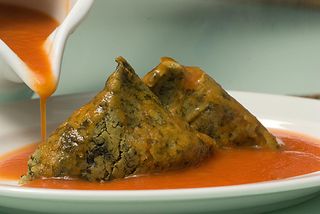
A vegetarian appetizer from the fixed menu: tamalitos de acelgas, bañadas en caldillo de jitomate (little swiss chard tamales, bathed with a thin tomato sauce), from the state of Tabasco. Photo courtesy Azul/Condesa.
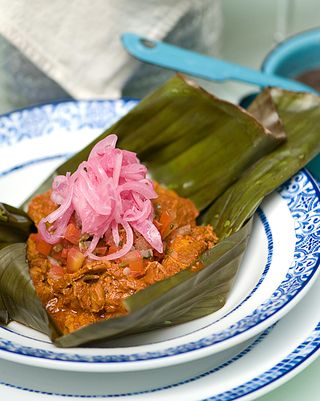
Traditional Yucatecan cochinita pibil (pit-roasted pork), cooked in a banana leaf and garnished with pickled red onions. Photo courtesy Azul/Condesa.
During the month of April, the festival menu was called MMMM…Mango!, to celebrate the onset of that fruit's season in Mexico. Everything from salads to desserts included mango: diced into guacamole, garnishing your steak or shrimp, fresh-frozen into ice cream, or served as a simple bowl of the king of fruits, mango made your perfect choice of dinner even better.
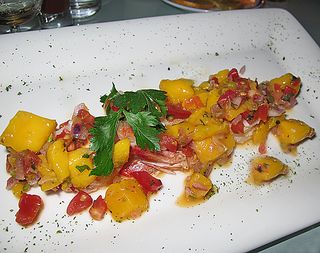
Sautéed shrimp covered with mango salsa–delicioso! Mexico Cooks! photo.
Have you bought your plane tickets yet? Just wait! Desserts are as marvelous as everything else on the menu at Azul/Condesa. Your choices range from the simplest bowl of ice cream to the outrageously delicious–well, I truly don't know what I prefer. You look:
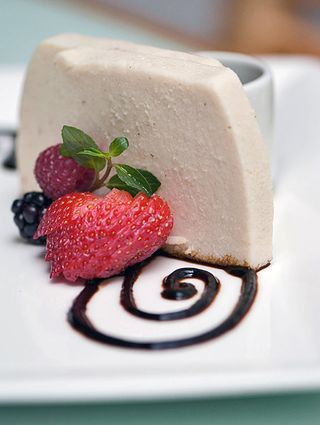
Espuma de guanábana is a light-as-a-breath refreshing soursop (I know, a terrible English name for a fabulous fruit) mousse served with your choice of salsas: the red fruits that you see in the photo, black zapote, or chocolate. Photo courtesy Azul/Condesa.
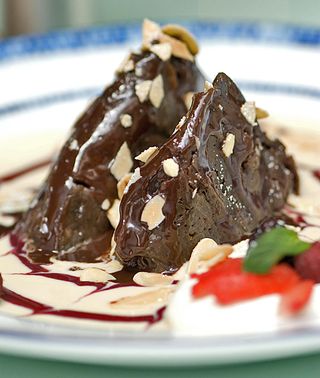
Tamalito de chocolate (little chocolate tamal), accompanied with a custard sauce, chocolate sauce, AND a mixed-berry sauce, then topped with slivered almonds and whipped cream. Oh man… Photo courtesy Azul/Condesa.
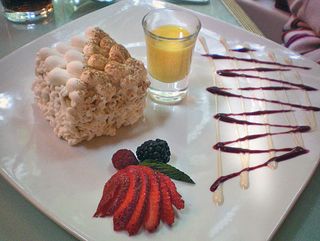
Last, pastel de tres leches (three milks cake), served with a generous pour of rompope (Mexico's eggnog–this devilishly good liqueur has its origins in a convent) and presented with fresh fruit and a variety of sauces. Photo courtesy Mexico Cooks!' dear friend from Guadalajara, Tim Welch.
We've tried to capture a photo of the dessert that Mexico Cooks! prefers, but somebody has always snitched a forkful before we can take the picture. Triángulo de café pluma is a multi-layered coffee-flavored cake, filled with coffee butter cream and covered with dark chocolate and is well worth snitching.
Beautiful in concept and extraordinary in execution, Azul/Condesa fills a niche in this Mexico City neighborhood that has been vacant until now. The fixed menu is marvelous, the festival menus are filled with regional and seasonal treats that you will love. Prices? Moderate.
Go. When you're visiting Mexico City, just go.
Azul/Condesa
Nuevo León #68
Colonia La Condesa
Mexico, D.F.
Telephone 5286-6380 or 5286-6268 for reservations
Monday through Saturday from 1:30PM until 1:30AM, Sundays 1:30PM until 6:30PM.
Looking for a tailored-to-your-interests specialized tour in Mexico? Click here: Tours.
